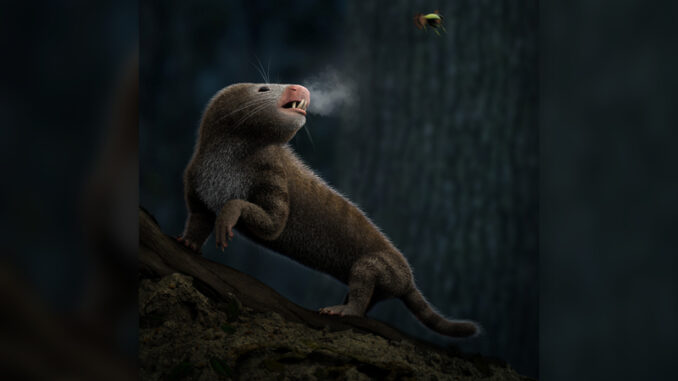
Experts have currently decided the time-frame from whilst our oldest predecessors transitioned in the direction of being warm-blooded, and it came about drastically similarly and plenty quicker than anticipated.
Warm-Blooded Earliest Ancestors
The finding, discovered through reading the microscopic channels of the internal ear, dates the emergence of mammalian warm-bloodedness to kind of 233 million years ago, which is nineteen million years down the road than at first believed, Live Science reported.
These segmental channels are full of endolymph, a sticky liquid that titillates the small filaments bordering the channels because it pours through.
Furthermore, as in step with Eurekalert, those strands ship indicators to the frightened system, educating it on a way to keep the frame stable. The honey-like endolymph, which includes positive solvents, turns into runnier because it heats up, forcing the auditory tubes to modify shape so the liquid can hold to function.
As in step with specialists the ear liquid is windier in ectothermic, or bloodless-blooded, flora and fauna and consequently acts very just like treacle and calls for large gadgets to circulate. Endothermic, or warm-blooded, creatures, on the opposite hand, have a greater gloppy mucus and require tight areas.
Study discovered in a piece of writing published July 20 withinside the ebook Nature that this temperature-primarily based totally trait often makes, semicircular tubes a first rate webweb page to pinpoint the immediately whilst prehistoric animals’ bloodless blood have become hot.
In a press launch studies co-lead creator Romain David, an companion provost on the Natural History Museum in London, defined that earlier currently, semicircular channels have been normally applied to forecast prehistoric creature movement.
Even so, scientists reasoned that through very well reading their biomechanics, authors would possibly likewise hire them to estimate frame warmth. David brought that that is since, similar to syrup, the liquid housed inside semicircular channels turns into much less sticky [syrupy] whilst warmth rises, influencing performance.
As a result, morphological changes have been essential to keep top outcomes during the shift to endothermy, and scientists might also additionally comply with them in mammal relatives.
Warm-Blooded Mammals
Scientists analyzed 3 internal ear channel specimens from 341 creatures throughout the herbal world – 243 contemporary taxa and sixty four defunct creatures – to decide the chronology of this developmental transition. The report’s fifty four historical creatures advanced the small internal ear channel functions required for warm-blooded creatures 233 million years ago, in line with the findings.
Prior in the direction of the discovery, researchers consider mammals obtained warm-bloodedness thru cynodonts, a genus of scaly, rat-like reptiles believed to have acquired warm-bloodedness about the duration in their preliminary presentation 252 million years ago. The contemporary discoveries, nonetheless, display that mammals separated from their historical forebears pretty dramatically than formerly thought.
While as proven in current replace through information media website, Scientific American, the abrupt transformation got here as a surprise. Heat-resistant ear lobes did now no longer rise up finally withinside the geological proof than specialists predicted. It came about a great deal quicker, consequently, performing concurrently because the first mammals keeps to extrade whiskers, hair, and particular bodily infrastructure.
Likewise, studies co-lead researcher Ricardo Arajo, a physicist on the University of Lisbon in Portugal, stated in an assertion that at once against winning studies thought.
It become now no longer a lengthy, plodding improvement over tens of hundreds of thousands of years as at first believed, but might also additionally have came about rapidly whilst activated through novel mammal-like biosynthetic strategies and the introduction of fur.
Follow-up look at might be had to corroborate the discoveries, even though the specialists are overjoyed that their discovery will help to deal with one of the maximum long-status troubles regarding the improvement of mammals, as in step with The Conversation.

Leave a Reply